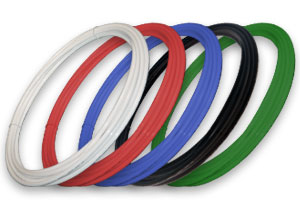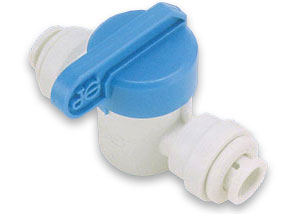Does reverse osmosis remove lead from water? Yes, reverse osmosis drastically reduces lead and many other contaminants in water. If you’re looking for a water filtration system for your home or business, reverse osmosis (RO) systems are an excellent choice for safe drinking and bathing water.
The general consensus is that there is no “safe amount” of lead levels in a water supply, as any amount of lead is a hazardous amount. It can be absorbed through the skin and accumulate in the body over time. Lead in drinking water poses serious health risks that should not be overlooked. Exposure to lead can cause a range of health issues, particularly in children and pregnant women.
Many cities have aging water systems with pipes in use that contain lead, too, so many that the EPA has stated it wants to spend/invest $15 billion to replace them all.
The Dangers of Drinking Water with Lead
What is lead, and how is it harmful?
Lead is a toxic heavy metal. It can adversely affect various systems in the human body, as well as dogs, cats, and other animals. Even at low levels, lead exposure can lead to developmental delays and disorders, learning difficulties, and behavioral problems in children. In adults, long-term lead exposure may result in reproductive issues, high blood pressure, and kidney damage.
Why is lead so poisonous?
Clinal studies have shown that lead contributes to oxidative stress in the body, just like PFAS. Specifically, lead inhibits the function of delta-aminolaevulinic acid dehydratase (ALAD), a crucial enzyme involved in the biosynthesis of heme, the cofactor essential for hemoglobin.
What are the sources of lead in drinking water?
Lead sources in drinking water vary, but the primary source is commonly the plumbing system in older homes or buildings with lead pipes or fixtures. Corrosion of these materials can cause lead to leach into the water supply. Lead solder used to join copper pipes can also contribute to pollution. Other likely sources include:
- Industrial activities: food production, textile manufacturing, raw material mining, refining oil, electricity production
- Natural deposits: phosphate, copper, other metals
- Lead-based plumbing fixtures: pipes and faucets
How do I know if my drinking water has lead?
Water testing performed by a certified laboratory or company will ensure accurate results. If lead levels exceed acceptable limits, immediate action is necessary to remove it.
What are acceptable levels of lead in water?
The EPA warning level for lead in drinking water is more than 15 ppb (parts per billion), 0.015 ppm (parts per million), or 0.015 mg/L (milligrams per liter). The objective is to have the lowest lead possible in drinking water, especially in homes with young children or pregnant women.
Does Reverse Osmosis Remove Lead? Yes, and Much More
What does reverse osmosis remove from tap water?
A reverse osmosis home system and water filter drastically reduces:
- 90% of total dissolved solids (TDS)
- A long list of contaminants and minerals from your drinking water, including lead, sand, mercury, chlorine, fluoride, cryptosporidium, and hexavalent chromium
How does reverse osmosis reduce lead in water?
Reverse osmosis uses a semi-permeable membrane to filter out impurities in water, including up to 99% of lead. Specifically, the process involves applying pressure to your water to force it through a membrane separation process. The membrane has microscopic pores that only allow pure water to pass through. Contaminants such as lead are separated and sent to the drain.
Why choose a reverse osmosis filter for lead removal in your water?
When removing lead, reverse osmosis systems are an excellent choice. They are specifically designed to tackle the issue of lead in water and are renowned for purifying water and removing various other toxins and sediment.
Additionally, reverse osmosis systems are convenient and easy to install and use. Once installed, they require minimal maintenance and can seamlessly integrate into your existing water supply. With a reverse osmosis system, you can enjoy clean, great-tasting water straight from your tap.
Comparing Reverse Osmosis with Other Water Filtration Methods to Remove Lead
Carbon Filters
Carbon filters are also a great choice for removing lead from water. These filters work by adsorption, where lead particles adhere to the surface of the carbon filter. However, carbon filters have limitations when removing lead. While they can effectively remove some lead, they may not be as efficient as reverse osmosis systems in eliminating higher levels of lead.
Ion Exchange Systems
Ion exchange systems use a resin bed to remove lead ions. However, reverse osmosis is advantageous over ion exchange systems in removing a broader range of unwanted particles, not just lead.
Buy a Reverse Osmosis System or Filter to Reduce Lead in Your Drinking Water
H2O Distributors partners with the top brands in the water filtration industry to offer a wide range of reverse osmosis systems designed specifically for lead removal. A reverse osmosis system will undoubtedly give you clean, tasty drinking water free from lead and other harmful impurities.
The products we sell are top-quality, durable, and easy to use and install. Plus, big box stores cannot compete with our superior customer service. Contact the team today to discuss a reverse osmosis system for your home or business.


















